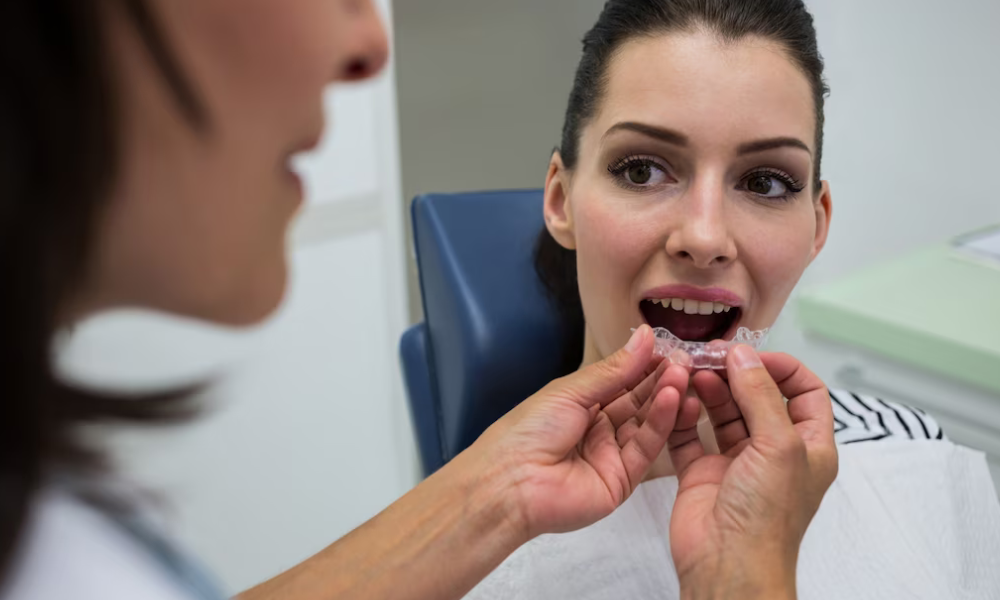Have you ever wondered why your jaw sometimes feels misaligned, leading to discomfort while eating or speaking? The alignment of the jaw plays a crucial role in our overall oral health and function. Thankfully, modern orthodontics has advanced significantly, offering effective solutions to achieve optimal bite and function. In this article, we will explore the importance of jaw alignment and delve into the world of orthodontics, with a special mention of IICAD Bangalore as a renowned training institute in this field.
Our jaws are essential for various daily activities such as chewing, speaking, and even breathing. When the alignment of the jaw is off, it can lead to a host of problems, impacting our oral health and overall well-being. Thankfully, orthodontics offers effective solutions to correct jaw misalignment and achieve optimal bite and function.
Understanding Jaw Alignment
Jaw alignment refers to the proper positioning of the upper and lower jaws concerning each other. When the jaws are correctly aligned, the teeth fit together harmoniously, promoting effective chewing and reducing the risk of dental issues. However, various factors can lead to misaligned jaws, creating problems that may require orthodontic intervention.
The Significance of Optimal Bite
An optimal bite occurs when the teeth of the upper and lower jaws fit together precisely. Achieving an optimal bite is crucial for proper chewing, digestion, and speech. Moreover, it helps prevent excessive wear on the teeth and reduces the likelihood of jaw pain or temporomandibular joint disorders (TMJ).
Common Jaw Alignment Issues
- Overbite and Underbite: Overbite occurs when the upper front teeth overlap the lower front teeth excessively. On the other hand, underbite is when the lower teeth protrude beyond the upper teeth.
- Crossbite: A crossbite happens when one or more upper teeth bite inside the lower teeth, leading to misalignment.
- Open Bite: In an open bite, the upper and lower front teeth do not touch when the mouth is closed, causing difficulties in biting and chewing.
- Misaligned Teeth: Teeth that are crooked, crowded, or spaced irregularly can contribute to jaw misalignment and impact oral function.
The Role of Orthodontics
Orthodontics is a specialized branch of dentistry that focuses on correcting jaw and teeth misalignment. Orthodontists use various appliances and treatments to guide the teeth and jaws into their proper positions, thereby achieving optimal bite and function.
Traditional Braces vs. Clear Aligners
- Benefits of Traditional Braces: Traditional braces use metal brackets and wires to gradually move the teeth. They are highly effective for complex cases and precise tooth movement.
- Advantages of Clear Aligners: Clear aligners, like Invisalign, are removable and virtually invisible. They offer greater flexibility and convenience while maintaining aesthetics during treatment.
Jaw Surgery for Complex Cases
In severe cases of jaw misalignment, orthodontic treatment may be combined with jaw surgery (orthognathic surgery). This procedure can correct skeletal issues and enhance facial balance and harmony.
Achieving Facial Harmony with Orthodontics
Orthodontics not only corrects jaw misalignment but also contributes to overall facial aesthetics. A well-aligned jaw can improve the balance of facial features, enhancing the individual’s appearance.
Importance of Early Intervention
Early orthodontic evaluation is essential for children to detect any potential jaw or teeth alignment issues. Timely intervention can prevent more extensive treatments later in life.
Orthodontic Treatments for Adults
Orthodontic treatments are not limited to children and teenagers. Increasingly, adults are seeking orthodontic care to address long-standing alignment issues and achieve a confident smile.
IICAD Bangalore: Shaping the Future of Orthodontics
IICAD Bangalore is a renowned training institute dedicated to advancing the field of orthodontics. With state-of-the-art facilities and experienced faculty, it equips aspiring orthodontists with the knowledge and skills to transform smiles and improve lives.
The Journey to a Beautiful Smile
The orthodontic journey begins with a comprehensive evaluation by an orthodontist. After assessing the alignment of the jaw and teeth, a personalized treatment plan is created to address specific needs and goals.
Maintaining Your Results
Following orthodontic treatment, it is crucial to wear retainers as prescribed by the orthodontist. Retainers help maintain the results achieved and prevent teeth from shifting back into their original positions.
Lifestyle Impacts on Jaw Alignment
Certain habits and lifestyle choices, such as teeth grinding or nail-biting, can affect jaw alignment. Awareness of these habits and seeking appropriate interventions can aid in preserving optimal bite and function.
Summary
Jaw alignment plays a pivotal role in our overall oral health and well-being. Orthodontics offers effective solutions to correct jaw misalignment and achieve optimal bite and function. Whether through traditional braces or clear aligners, orthodontic treatment can transform smiles and boost self-confidence. IICAD Bangalore stands at the forefront of shaping the future of orthodontics, empowering dental professionals to create beautiful smiles that last a lifetime.

